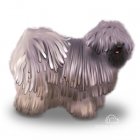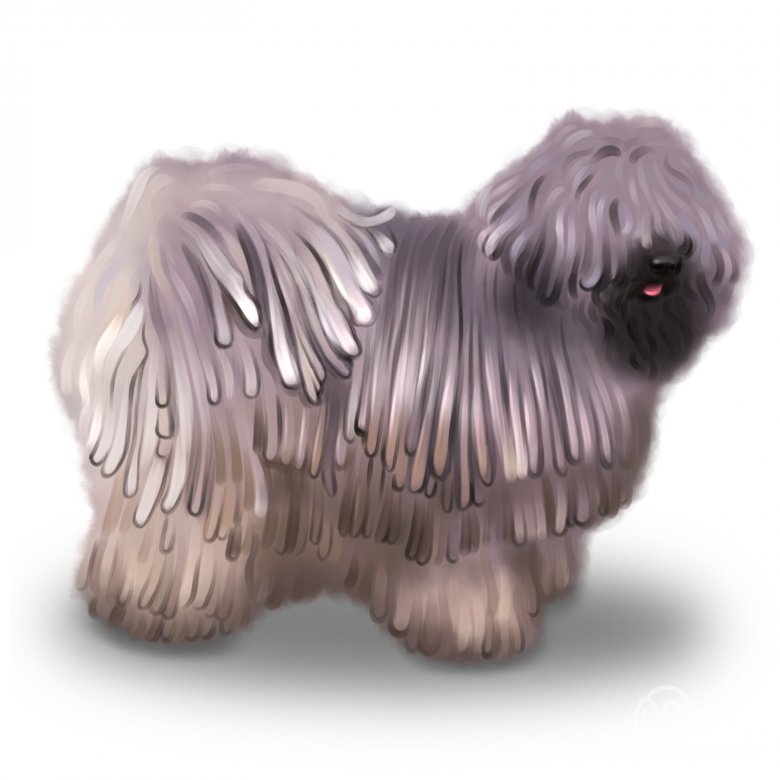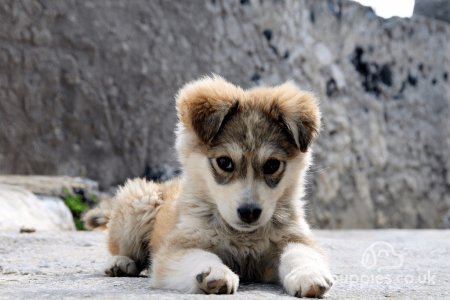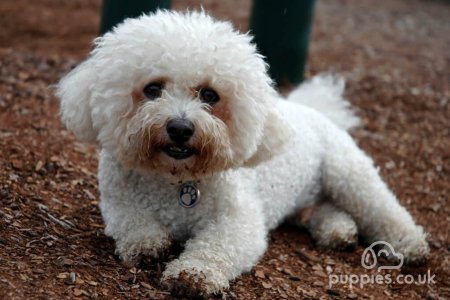Why Hungarian Pulis are great
The Hungarian Puli is a lively, agile and loyal breed that is instantly recognisable thanks to their ‘dreadlocked’ coat. Originally used as herding dogs, they have been bred to work closely with humans and as such are very affectionate and faithful companions. Some highlights:
Pulis make great family pets, they thrive on the company of their human family including children
Intelligent and easy to train
Great watchdogs
Highly adaptable
Things to consider when looking at Hungarian Pulis for Sale
While Hungarian Pulis are wonderful companions, they can also be high maintenance and in some ways challenging so make sure you have the time and patience needed to care for them properly. Some downsides to the Hungarian Puli:
Extremely high energy requiring a lot of daily exercise and stimulation
Due to their strong will and stubbornness, they aren’t the best choice for first-time owners
High prey drive and instinct to herd
History of the Hungarian Puli
The Hungarian Puli was believed to have been brought to Europe over a thousand years ago by the Magyars (nomads from Asia) as they travelled west. The Asian Nomads were thought to have several dog breeds travelling with them including the Puli. When Pulis arrived in Hungary they quickly became an extremely important part of Hungarian shepherd’s lives. It is thought that records can trace this ancient breed all the way back to the 9th century. In Hungary, the breed was (and still is) used to herd and guard flocks. The Puli were so highly regarded and treasured by the shepherds that they would be willing to pay a year’s wage for them and would refer to them as “Hungarian Legends”. As farming practices changed in the 19th century, the Hungarian Puli suffered a severe decline in numbers. They were actually almost unheard of in other countries until more recently and the breed was recovered from the brink of extinction when a breeding program was developed for them in 1912. The corded coat of the Puli is perfectly adapted for protecting them while they work in the harsh Hungarian climate. Their dense coats would’ve also been effective in protecting the dogs from predators such as wolves that preyed on the flocks the Puli were protecting.
Appearance
The Hungarian Puli has a very distinctive appearance, with a thick corded coat that makes them look far bigger than they actually are. Underneath a Puli’s mop of fur, they are actually quite lean with a slender, sturdy body and a small head. You will always find these unique, agile dogs with a friendly, lively expression on their face.
How big is the Hungarian Puli?
The Puli is a medium sized dog. Males are 40 – 44cm and females are 37 – 41 cm at the withers.
How heavy is a Hungarian Puli?
Fully grown Pulis will be between 11 - 16kg with males generally being slightly larger than females.
What Colour is the Hungarian Puli?
Puli have a solid, single-colour coat. The most common Puli coat colour is black although white, grey and fawn also exist in fewer numbers.
Temperament
You will find this breed to be intelligent, lively and very loyal to their family. They can be wary of strangers but are more confident if they have been well socialised from a young age. Overall, they are loving protectors that aim to please their owners.
Do Hungarian Pulis make good guard dogs?
Yes, they were bred for herding and guarding so they are excellent watchdogs.
Do Hungarian Pulis bark a lot?
They do bark but only tend to bark if there are strangers nearby or they are concerned about something. When they are young they may start to get into the habit of barking excessively, if you find this is the case then consistent, firm training should put a stop to the barking.
Are Hungarian Pulis easy to train?
Hungarian Puli are highly intelligent and eager to please which means they are easy to train. Be consistent and you will find your Puli will excel during training.
Are Hungarian Pulis playful?
Hungarian Pulis do have a playful, fun side to their nature. They are very entertaining and mischievous and will definitely have you laughing and smiling at their antics.
Are Hungarian Pulis good with children?
If they have been well socialised and well trained then they are great around children. Hungarian Pulis are very playful and very friendly but can become overexcited. They are protective of their family and may also try to herd children and other pets to keep them away from perceived danger.
Are Hungarian Pulis good with other pets?
They are friendly with other pets, particularly if they have grown up together. Positive, early introductions are important to ensure that your Puli accepts other pets in the home.
Can I leave a Hungarian Puli Alone?
As this breed is so attached to their family they are not happy when left alone for long periods of time. A Hungarian Puli is best suited to households where there is at least one person at home otherwise they could suffer from separation anxiety.
Do Hungarian Pulis like water?
Yes, generally Hungarian Pulis love water. They will often jump into water whenever they have the opportunity. You need to be careful to make sure your Puli is properly dry after swimming as moisture can get caught in their cords and this can result in skin flare-ups.
Health
How long do Hungarian Pulis live?
The average lifespan of a Hungarian Puli is between 10-15 years.
How much exercise does a Hungarian Puli need?
The Hungarian Puli is a very energetic dog that needs at least an hour of exercise a day. They thoroughly enjoy long walks and playing, if you have a secure back garden your Puli will love to spend time running freely in the garden too.
What are Hungarian Pulis Common health issues?
Hungarian Pulis are generally healthy and robust but the following health issues seem to affect the breed most:
Care
You may think all of that fur must take a lot of maintenance but actually caring for a Hungarian Puli is nowhere near as daunting as it may first appear.
How much space do I need for a Hungarian Puli?
If you have a secure, enclosed garden space for your Hungarian Puli this is ideal. They are not the best dog to have in an apartment because they are so energetic and need stimulation.
What should I feed my Hungarian Puli?
The type of feed and amount given to your Hungarian Puli depends on age, veterinary advice and also the feeding schedule of the breeder. Whatever feed you choose it should be nutritionally balanced and if you change your dog’s diet it needs to be done gradually to avoid causing an upset tummy.
How much grooming do Hungarian Pulis need?
During the first 6 to 12 months a Hungarian Puli is high maintenance because their cords are only just starting to develop meaning you will need to separate them by hand to create smaller cords. Once the cords are formed the grooming requirements drop down to almost nothing, they never need to be brushed. You will need to check their ears for dirt and wax build up and maybe occasionally wash their legs when they come home from a walk covered in mud.
Do Hungarian Pulis shed?
No, they do not shed.
Average costs
How much does it cost to keep a Hungarian Puli?
As a rough guide in pricing: Cost to buy: roughly £700 + for a well-bred Hungarian Puli puppy Other costs (Vet, Food etc): £75 per month
Specific Buying Guide
You can read our general buying guide here (/advice-on-buying-a-puppy/), with the most important thing being going to view your Hungarian Puli Puppy, seeing it with its mother, and checking the quality of the breeder. More specifically, here is some Hungarian Puli puppy buying advice:
As a Hungarian Puli puppy can be sold for a large sum of money be aware of amateurs who are breeding Pulis puppies frequently without concern for the welfare of the dogs. If a breeder always has puppies available this can be a red flag of poor breeding practices.
Be aware of scams where Pulis puppies are advertised far cheaper than usual. Make sure you see the puppies and visit the breeder before you pay anything for the puppy (that includes the deposit).
Other reading, Adopting Hungarian Puli Puppies and Rescue Organisations
A big thank you to the following sources who helped to shape this article:
https://www.hungarianpuliclubofgb.co.uk/
https://www.akc.org/dog-breeds/puli/
https://www.thekennelclub.org.uk/search/breeds-a-to-z/breeds/pastoral/hungarian-puli/














